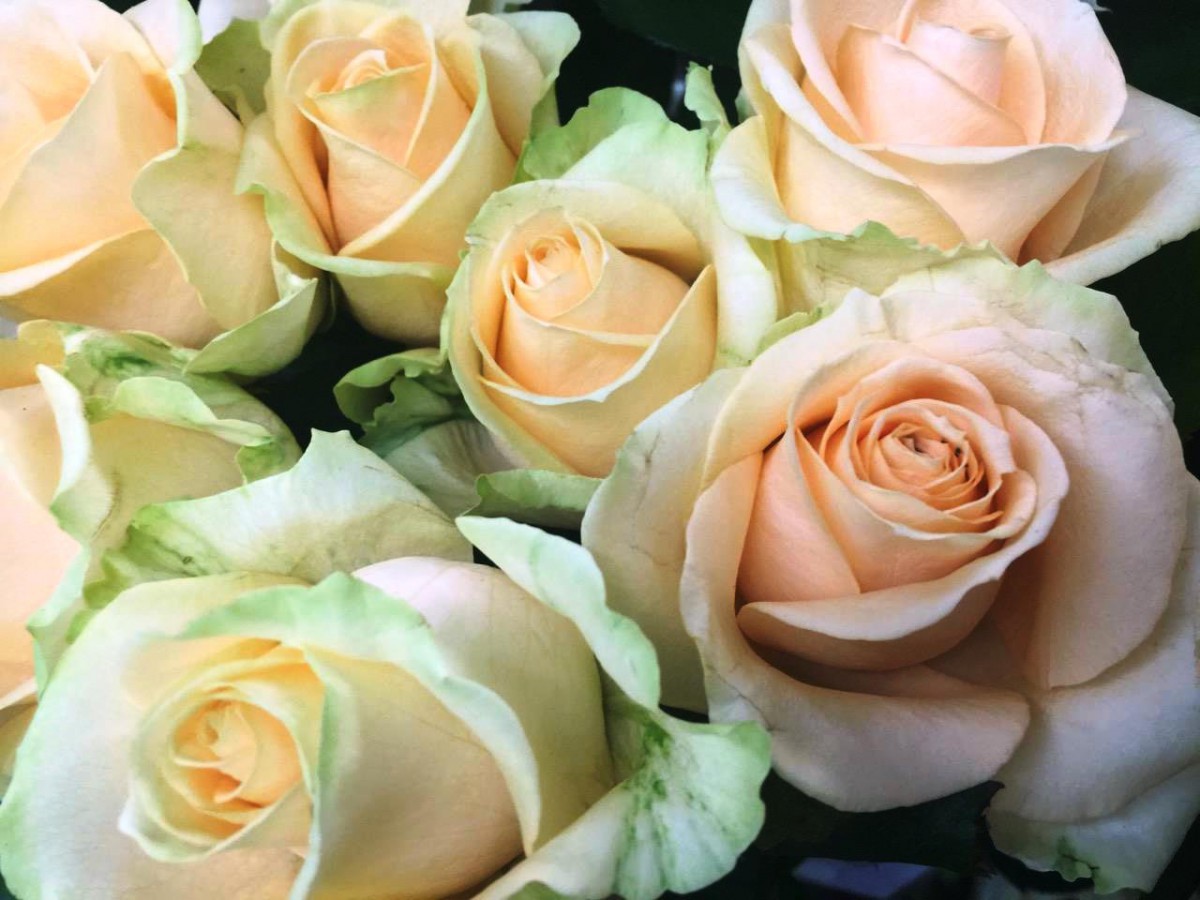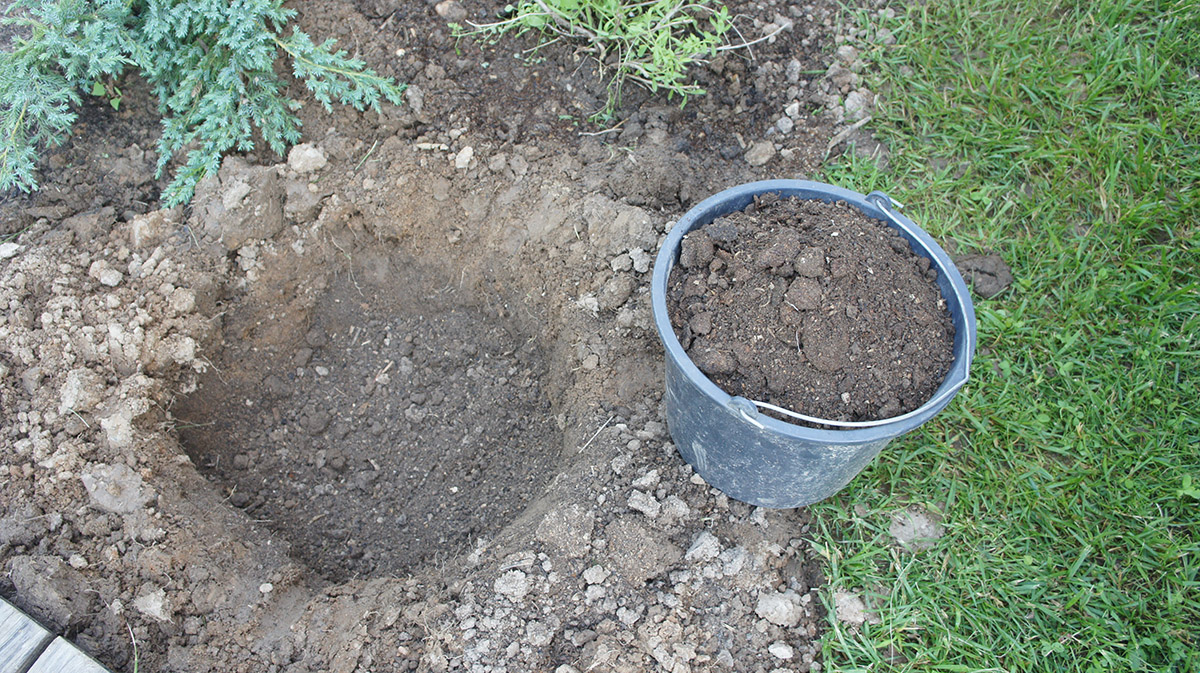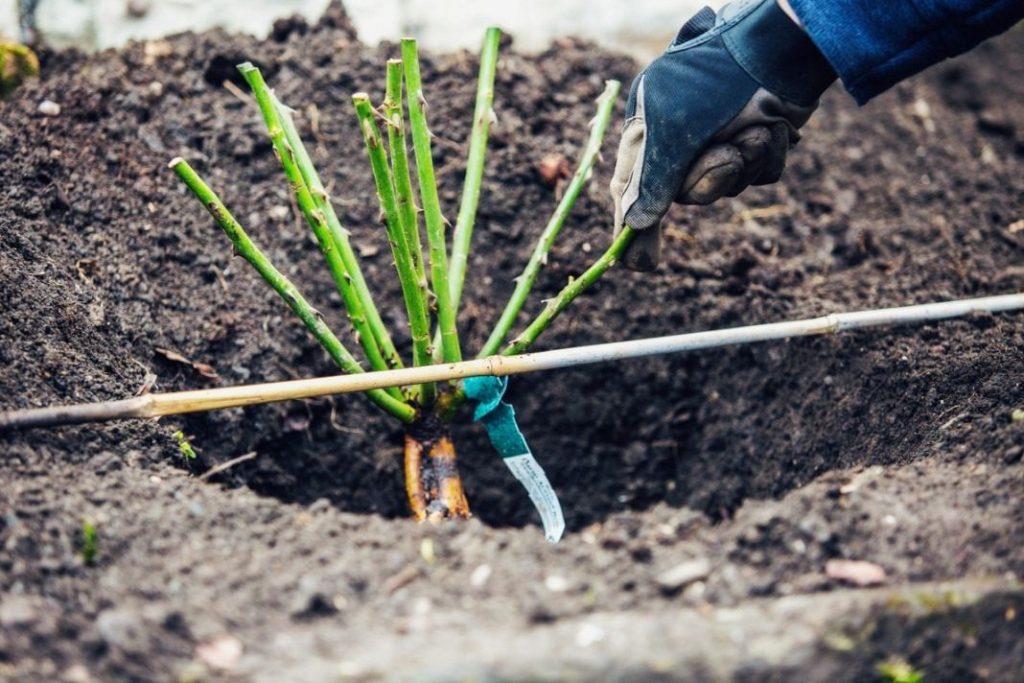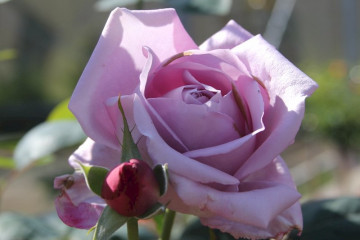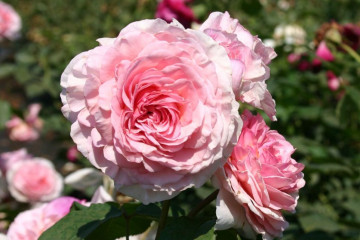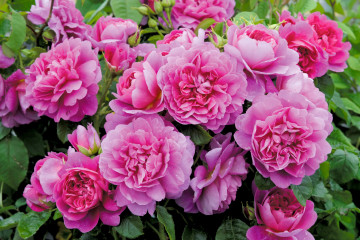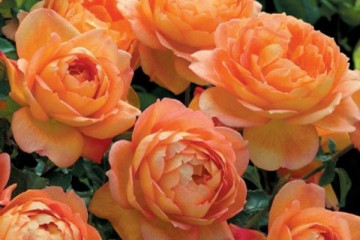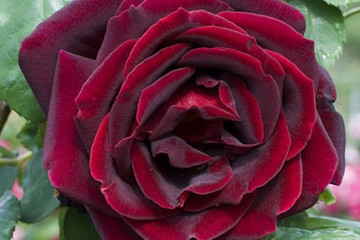Rose Peach Avalanche - variety description
Content:
In 2004, breeder Lex Wurn from the Netherlands created the Peach Avalanche rose variety, which resembles an avalanche that covered an area of land throughout the summer. In 2007, the hybrid tea variety was highly appreciated by connoisseurs of natural beauty in Holland. However, in Russia, the popularity of the flower is not so high - the rose is just beginning to grow in large quantities.
Peach Avalanche: pink roses
It is characterized as a hybrid that grows up to 1 meter in height. At the same time, the net length of the stems, on which graceful buds are formed, can reach 60 cm. Medium double flowers (up to 25 petals) of a light apricot color of a classic shape against a background of matte bright green foliage literally fascinate. The appearance of the plant at one time caused a storm of enthusiasm among critics.
The description of ordinary flower lovers says that the variety meets the following basic parameters:
- the average height of the bush is about 80 centimeters;
- the size of a flower bud reaches 13 centimeters in diameter;
- leaves are large, dense green in color with a glossy sheen;
- the variety is frost and disease resistant.
This Dutch rose variety is recommended for group planting and for cut.
Advantages and disadvantages of the variety
The advantages of the Peach Avalanche rose are:
- large buds,
- emerald shade of blooming petals,
- the variety is ideal for cutting,
- suitable for single and group landings,
- cold resistance,
- protection from common flower pests and diseases.
One serious drawback that scares off novice florists is that careful care is required.
Use in landscape design
Roses will decorate any territory. They can be planted in separate flower beds or as a hedge. It is important for the landscape that the flowering bushes flaunt for a long time.
Peach Avalanche roses in the form of compacted petals, collected in a neat form of single buds, delight with their beauty from the end of May until the onset of cold weather.
And the variety is also called terry. The bushes are massive, branched, with dull green leaves, serve as a decorative design as single and group plantings, where, among other flowers, roses of this variety take root remarkably and delight people with their beauty. Roses are popular with florists and flower growers.
Growing a flower
Planting is carried out mainly by cuttings, seedlings.
By the time of planting, this type of roses does not differ from other varieties - this is spring or autumn. For the southern regions, both options are suitable, for the Urals and Siberia it is better to stop at the first.
For planting Peach Avalange roses, a site is set aside, well lit and warmed by the sun. Since plants do not tolerate drafts, you need to select a place that is protected from cold air currents.
How to prepare the soil and flower for planting
The rose shrub prefers drained soils with moderate moisture and acid-base reaction (5.6-7.3 pH). For planting, a soil mixture is prepared, which contains:
- fertile soil - 2 parts,
- humus - 3 parts,
- river sand - 2 parts,
- peat - 1 part.
In each hole, it is necessary to arrange drainage from expanded clay, small stones or gravel.
Seedlings are subject to inspection before planting. In this case, it is necessary to remove the damaged parts of the plant, to shorten the long shoots. A seedling height of 35 cm is considered normal.
Planting procedure step by step
It is recommended to plant rose bushes taking into account some simple rules:
- The seedlings should be placed in water for 5 hours to adapt and stimulate vitality in the new environment.
- For planting a seedling, a hole is prepared with a depth of up to half a meter.
- It is necessary to take into account the size of the root ball of the earth so that the width of the planting hole corresponds to the size of the ball.
- Fresh manure should not be placed in the hole.
- The earth should be poured into the landing hole a little with compaction, after filling the hole, the soil should be tamped.
- The planted bush is watered abundantly, unhurriedly (2 buckets of water per hole).
- Dried soil must be mulched.
- A watering furrow is dug around the bush.
In the first year, flower buds formed before July must be removed to allow the plant to grow stronger. Only in this case will the rosebush be prepared for winter as much as possible.
Plant care
Plants of the Peach Avalange variety need constant care. The flower feels comfortable and forms well under favorable temperature conditions. Regardless of the fact that the culture calmly reacts to a decrease in temperature, it should be planted in warm soil, in late April - early May. In such conditions, the bushes will take root and start new shoots earlier.
The Avalange rose variety is a light-loving plant that prefers well-diffused lighting.
Watering rules and humidity
The growth and formation of rose bushes is directly dependent on humidity. Lack of moisture causes a change in the color of the foliage, the appearance of yellowness. Excess will affect the condition of the roots (decay).
In hot, dry weather, you need to water it with water warmed up in the sun so as not to stress the plant. The regularity and amount of water when irrigated depends on the weather conditions. During periods without rain, under one bush, you need to give water up to 20 liters at least 2 times a week.
In case of prolonged rains, on the contrary, they make a shelter so that the rose bush is not constantly wet.
With the onset of autumn, watering should be stopped.
Top dressing and soil quality
Hybrid tea roses of the Avalange variety need high-quality fertilizing in the form of mineral fertilizers (phosphorus, potash, nitrogen) during growth and flowering.
A solution is prepared per 10 liters of water - 10 g of urea and 15 g of nitrate. Mineral dressing should be alternated with organic supplements. During the formation of flower buds, the bushes are fed with complex fertilizers.
For this, a solution is prepared:
- water - 10 liters,
- urea - 40 g,
- saltpeter - 20 g,
- potassium - 15 g.
Pruning and replanting
Pruning rose bushes promotes intensive plant formation. The bush is given the desired decorative shape. The nutrition of young shoots is improved by removing the drying out branches. More air is supplied to the remaining branches, which is a preventive measure against the occurrence of a number of diseases.
In autumn, it is necessary to remove all wilted buds, rotten leaves, weak shoots from a rose bush. Such care will allow you to better prepare for the winter.
Spring and autumn are considered the best times to transplant roses. The bushes are dug out of the soil along with an earthen clod on the roots and transferred to a new planting site. The meaning of keeping a lump of earth is to preserve the roots and help the plant adapt in a new place.
Features of wintering a flower
In order for the wintering to be successful, you need to perform several steps:
- Stop feeding with the onset of September.
- You need to cut off the flower heads after shedding the petals.
- In time, before the onset of cold weather, rose bushes must be spud to form an earthen mound about 20 cm high for the formation of additional roots.
- In the last days of September, you should pinch the tops of the shoots, which will no longer have time to please with flowers. In October, you can cut the shoots shorter.
- Your "rose garden" should be cleaned of grass, covered with rubble or other shelter.
The peach-colored Dutch rose is not ready for the harsh winters of the Urals and Siberia. In regions where the temperature drops below -25 ° C in winter, she needs additional shelter. As a rule, they cover the bush with spruce branches, a non-woven material, and after the snow falls, a small hill is poured.
Blooming rose
Fascinated by the magic of beauty, people sometimes plant a rose on the lawns among the grass. In the active period of flowering, an amazing picture is obtained: an emerald background, on which a lush blooming rose bush or even a group of bushes covered with lovely flowers flaunts. For this type of accommodation, the Peach Avalanche rose fits like no other.
Of course, growing such splendor is problematic: the surrounding grass is trying to cover the space around the rose. We have to constantly weed.
The shape of the rosebud is classic - the petals are collected in a neat dense glass, which can hold out on the bush for a very long time. Despite the beauty of the bloom, there is practically no smell around the plant. Some gardeners consider this a disadvantage, but there are also connoisseurs of non-scented roses.
The buds are most often solitary, pronounced. However, according to some descriptions, in rare cases, brushes of two or three flowers appeared at the ends of the shoots.
The Avalanche rose blooms practically without a break, from the last days of May, then all summer until the October frosts. The characteristic of the plant is such that miracles should not be expected from repeated flowering. Moreover, in order for it to pass at the same level, the rose bush must be fed with phosphorus and potassium.
What if it doesn't bloom? Florists know different reasons:
- unsuccessful landing site;
- the pruning of the bush was done incorrectly;
- inadequate care;
- oppresses root shoots;
- cases of bacterial burns under cover (immediately need to be removed);
- natural aging process.
Flower propagation
Roses are propagated by cuttings and layering. The first method is considered preferable.
Cuttings are harvested by cutting off the shoots. Moreover, planting material can be taken even from any bouquet.
The breeding procedure is performed in the fall.
Rooting of cuttings of a rose must be carried out according to certain rules:
- cut off the cuttings, make treatment with Heteroauxin;
- prepare a hole about 30 cm deep, fill it 2/3 with fertile soil;
- plant the shoots obliquely (angle 45 °), deepen 2/3 of the cuttings;
- pour plenty of water.
Then you need to cover the cuttings by creating a small greenhouse. To do this, use a plastic container, a glass jar. In the first case, you can make small holes for ventilation. If you use glass, you will have to air the seedlings once a week.
Diseases, pests and ways to control them
When parasites are detected (spider mites, leaf rollers, aphids, bear), modern drugs (insecticides) are used.Affected leaves and shoots are removed.
Of the diseases, black spot and powdery mildew can be threatened. The Peach Avalange rose has an average resistance to them. Of all the known methods of combating plant diseases, targeted chemicals have proven to be the best. Chemicals act on the surface of the bushes and have their effect. You can find the right products in any gardening store.
The hybrid tea beauty conquered florists and landscape designers. Peach Avalange has a great future. Despite the difficulties in care, gardeners should definitely pay attention to this variety - whoever can grow it will certainly earn respect among other flower lovers.

